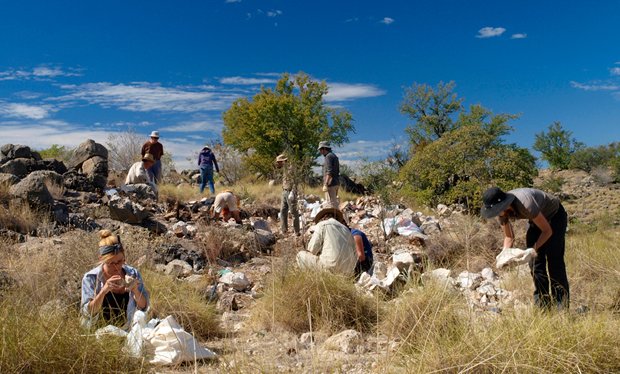Fossil of weird snail-eating marsupial found

ANCESTORS OF A BIZARRE skink may have out-competed and sent to extinction a snail-crunching marsupial that shared a common ecological niche, according to new fossils from Queensland. Scientists had long been puzzled by unusual fossil remains unique to an extinct marsupial thought to have lived about 10-17 million years ago.
Jaw bone fragments unearthed at the fossil-rich Riversleigh World Heritage site in north-western Queensland have revealed that the small animal named Malleodectes, (‘malleo’ is Latin for hammer; ‘dectes’ is Greek for biter) had a large, single tooth near the back of its mouth, behind its incisors and canine teeth.
“It was a characteristic distinct from all other marsupials and we didn’t know what role the tooth performed,” says lead researcher Dr Derrick Arena, from the University of News South Wales. Few other clues or fossil parts existed for the mysterious marsupial, which is thought to have been ferret-sized.

Pink-tongued Skink (Cyclodomorphus gerrardii) foaming at the mouth while crunching a snail.
The Mellodectes extinct marsupial was thought to once occupy the same niche as this skink. (Credit: Steve Wilson)
Extinct marsupial followed skink’s diet of snails
Derrick says a breakthrough came when his colleague, Queensland Museum’s Dr Scott Hocknull, noticed that the strange hammer-shaped tooth resembled one found in a pink-tongued skink (above), a lizard species still living in Queensland rainforest. The skink survives on snails and has a prominent blunt tooth among rows of much smaller teeth.
“We know this skink uses the tooth to crush snails; and the marsupial appears to have a similar dental pattern,” says Derrick. “So we’re reasoning that it may have evolved to exploit the same ecological niche that the skink occupies. However, they subsequently became extinct and have been replaced by lizards.”
Derrick says the finding, published this week in the journal Proceedings of the Royal Society B, may be a case of convergent evolution – where two species evolve separately but end up adopting similar solutions to surviving in their environment. “It’s interesting and bizarre that one of our marsupials would deign to live like a lizard and eat snails,” he says, “although it seems it worked out better for the lizards.”
Marsupial outcompeted by lizard in survival of the fittest
Lizards living in the wet forests of eastern Australia may have out-competed the marsupials as snail-eaters when the closed forests of central Australia began to decline millions of years ago.
“They almost certainly would have competed, if later descendents of these mammals overlapped with the ancestors of skinks as climate change drove the inland rainforests towards the east coast,” says UNSW’s Professor Mike Archer, who has worked at Riversleigh since 1983 and is a co-author on the paper.
“If this did happen, as a mammalian palaeontologist, it’s hard to face the fact that the lizards must have come out the winners, because they’re still here and the wonderfully bizarre Malleodectes is gone.”
The secret behind the mammal’s odd dental trait is amazing, he says. “We’ve become used to finding weird and wonderful creatures from the World Heritage fossil deposits at Riversleigh but commonly these are ‘understandable’ creatures, distant albeit strange cousins of groups that were familiar, such as marsupial moles and platypuses. In contrast, Malleodectes just dropped on us out of nowhere.”

The ball-peen hammer-like tooth in Malleodectes (left) and the Pink-tongued Skink (right)
are examples of convergent evolution, this time between a lizard and a mammal
suggesting both were highly-specialised snail-eaters. (Credit: Rick Arena and Scott Hocknull)
RELATED STORIES

